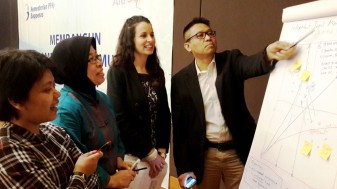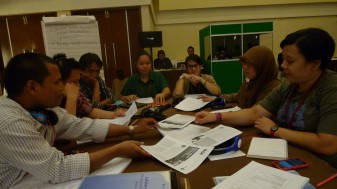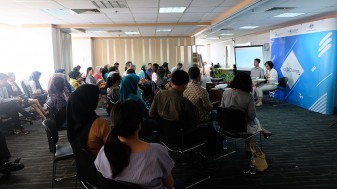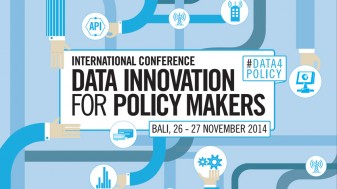This morning I jumped on the TransJakarta bus N 1 and travelled to Central Jakarta to the modern and cozy office of PulseLab. JonneCatshoek of Elva.org was presenting about digital citizen engagement strategies for making programmes more effective and accountable.Jonne has been working for the last few years in Georgia and his presentation was about his work with Elva there. There was a nice turnout. We met in a meeting room made for about 10-12 people but it was filled over-capacity with about 25-30 engaged participants from projects, donor agencies, NGOs, government offices.
Georgia has been at war in 2008. However, before the conflict security and safety were a problem in some parts of the country. The end of the conflict did not bring peace everywhere. Incidents and violence have continued to coexist along with donors and INGO projects that aimed at reducing the tension and return to a more normal day-to-day life. Following the end of the war humanitarian organizations, INGOs, and local governments were faced with a problem. They found it difficult to get good information about local security situation, particularly in remote areas. That made it difficult to respond quickly to threats and emergencies. It also made it difficult to national and local government to design and adapt policies and programmes in those areas.
The basic idea of Elva is quite straightforward. It combines the value of social capital and community networks with the opportunities created by the almost universal coverage of mobile phone communication and the power of open source software. Elva, in collaboration with NGOs and the government, identifies areas where it would be useful to gather data and information almost in real-time. It then identifies local trusted community leaders who act as volunteers and trains them in using sms or smartphones to send through text messages daily reports or respond to ready-made surveys to a central number at Elva. Here a software analyses automatically the content of the text messages and translates them into visual information on maps or charts. This information is accessed by CSOs, media, NGOs, citizens and authorities which can use it to respond to an emergency, analyze data trends, organize advocacy campaigns, etc. I found few things particularly interesting in the experience of Elva:
1) The volunteers are the data and knowledge producers in the system. At the same time they are also the ones demanding some sort of action or response otherwise they can lose interest in volunteering for this initiative. The system set up by Elva is meant to provide almost just in time data and evidence for a quick response in the case of emergency or plans and programmes. A two ways communication loop that maintains the engagement of the community volunteers.
2) Community leaders know their community and area well and can best detect changes and needs. Community knowledge and community voice is a very important source of evidence to inform policy and programme development if the government and local government are willing to listen and to establish a system to translate that knowledge into evidence that inform decisions on what to do.
3) As Jonne said, the approach by Elva is 80% understanding the social context and 20% technology. First you need to learn about the context and issues in a certain community; assess whether a platform such as the one of Elva can help to provide the information that can address some of those demands and needs; and only then develop and tailor a user-friendly platforms to visualize those information.
4) There is an interesting tension between the opportunities that technology provides in gathering, analysing, and presenting almost just-in-time evidence and the capacity of institutions to respond. In the case of emergency and response organizations that capacity may be in there, but in the case of government departments the time lag between the digital evidence and analog regulations may just be long and expanding.
5) Is there a risk that the information by volunteers may not be accurate or even exaggerate? Yes. But there is where the engagement and time invested in learning about the community and establishing a trust relationship helps to minimize this risk. Regular peer review meetings and social capital provide also with check and balances.
I left the meeting thinking that data innovation and technology is offering great opportunities for national and local governments willing to accept citizens as source of valuable data and knowledge for programmes and policies. I think that the systems developed by Elva can respond to the needs of emergency response programmes but also fulfill, with different types of analysis (e.g. trends), the more long-term data and evidence needs of planning agencies and government departments responsible for service delivery environmental protection.
Source: https://demand4evidence.org/2014/09/25/community-knowledge-mobile-phones-evidence-for-policy-response/





